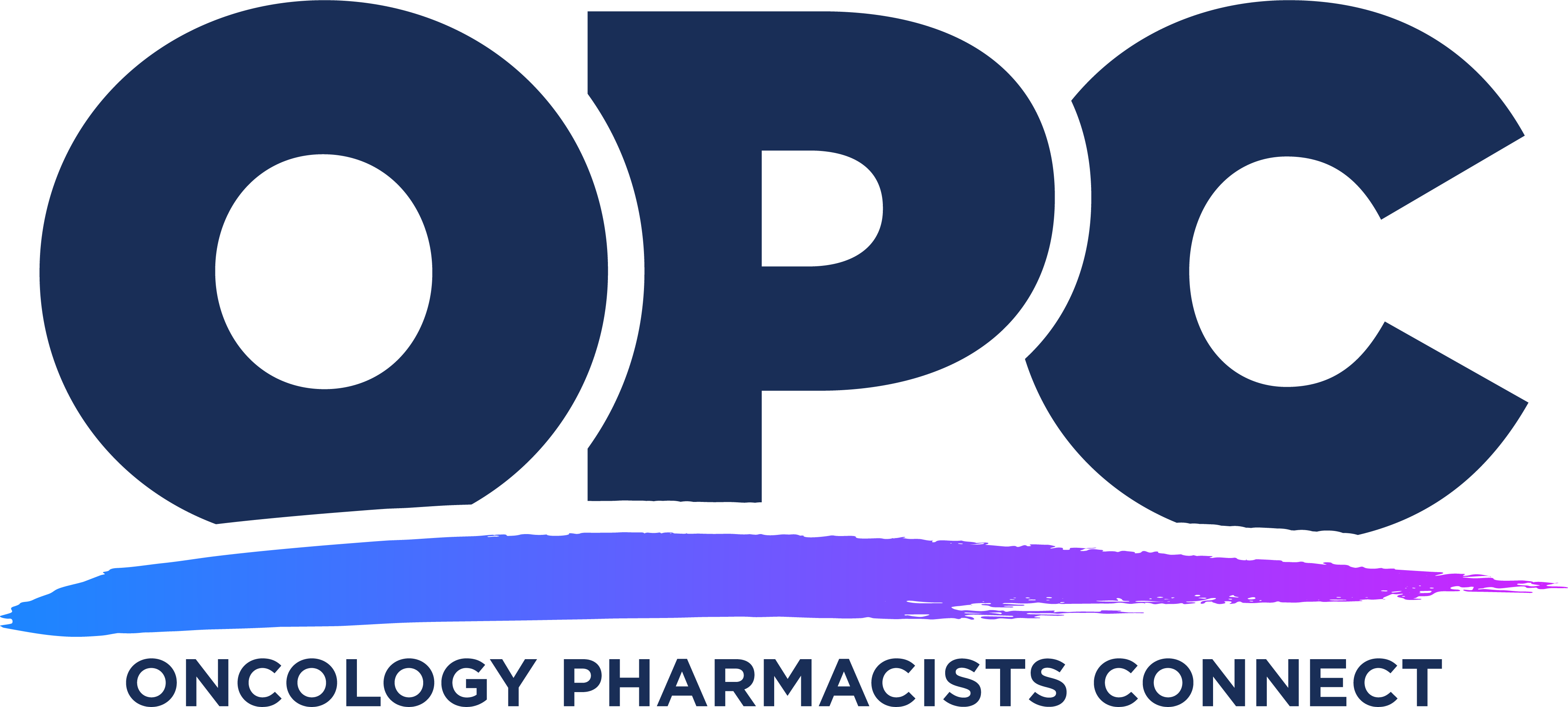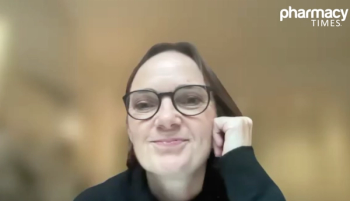
OPC 2025: Key Studies Shaping Lung Cancer Therapy From ASCO 2025

Key Takeaways
- Tarlatamab in SCLC improved response rates, PFS, and OS, addressing chemotherapy resistance and durability challenges. Outpatient monitoring reduced CRS rates.
- The IMforte study showed that lurbinectedin in addition to atezolizumab improved PFS and OS in extensive-stage SCLC, including patients with brain metastases.
At the 2025 Oncology Pharmacists Connect (OPC) meeting, Kevin Chen, PharmD, MS, BCOP, CPP, reviewed several key studies from the 2025 American Society of Clinical Oncology (ASCO) Annual Meeting, highlighting significant advancements in the treatment of small cell and non–small cell lung cancer.
Advancements in targeted therapies and immunotherapies are rapidly transforming the treatment landscape for lung cancer, offering new hope for patients with both small cell lung cancer (SCLC) and non-SCLC (NSCLC). At the 2025 Oncology Pharmacists Connect (OPC) meeting in Austin, Texas, Kevin Chen, PharmD, MS, BCOP, CPP, a clinical pharmacist practitioner in thoracic oncology and sarcoma and assistant professor of clinical education at the University of North Carolina Medical Center in Chapel Hill, discussed some of the key thoracic presentations that came out of the 2025 American Society of Clinical Oncology (ASCO) Annual Meeting. Chen focused on 5 key studies: DeLLphi-304 (NCT05060016), IMforte (NCT05091567), CheckMate-816 (NCT02998528), SACHI (NCT05015608), and an immune checkpoint inhibitor (ICI) timing study (NCT05549037).
The DeLLphi-304 Trial
The DeLLphi-304 study was a confirmatory phase 3 trial that evaluated the bispecific T-cell engager tarlatamab-dlle (Imdelltra; Amgen) in patients with SCLC who had previously received platinum-based chemotherapy. Although tarlatamab had been approved for approximately a year prior to the ASCO presentation, the trial’s results helped solidify its efficacy and safety in clinical practice, according to Chen.
The study compared tarlatamab with standard chemotherapy regimens, which included lurbinectedin (Zepzelca; Jazz), topotecan (Hycamtin; Sandoz), and amrubicin (Calsed; Nippon Kayaku). The results showed that tarlatamab significantly improved outcomes across multiple end points. The response rate improved from 20% to 35%, progression-free survival (PFS) increased from 4.3 to 5.3 months, and the median overall survival (OS) improved from 8.3 to 13.6 months. This is a noteworthy advancement in the treatment of SCLC, as chemotherapy alone, although effective, typically does not provide durable responses, Chen explained.
The study also highlighted the benefit of tarlatamab for patients with chemotherapy-resistant disease. In fact, 41% of patients maintained a response up to a year after starting treatment, which is a notable achievement for this patient population, according to Chen. Importantly, tarlatamab addresses 2 major challenges in SCLC: the limited durability of chemotherapy responses and the challenge of treating chemotherapy-refractory patients.
Regarding safety, the most common adverse effect (AE) reported was cytokine release syndrome (CRS), which occurred in more than 50% of patients. However, the incidence of immune effector cell-associated neurotoxicity syndrome was low at just 6%.
An important observation from the study was the impact of outpatient monitoring for CRS, Chen explained. A protocol amendment allowed for a shorter 6- to 8-hour monitoring period after the first 2 doses, as opposed to the standard 48-hour inpatient monitoring. Interestingly, this approach led to a reduction in CRS rates, Chen noted.
The IMforte Trial
In the IMforte study, investigators evaluated the efficacy of maintenance lurbinectedin and atezolizumab (Tecentriq; Genentech) vs atezolizumab alone after induction chemoimmunotherapy in patients with extensive-stage SCLC. The study demonstrated a significant improvement in both PFS and OS with the addition of lurbinectedin. Median PFS improved from 2.1 to 5.4 months, and OS improved from 10.6 to 13.2 months. Kevin explained that these data show that adding lurbinectedin was clinically meaningful, particularly in a disease where treatment options are limited and the response to standard chemotherapy is often short-lived.
Importantly, the study also included patients with brain metastases at baseline, who were excluded from previous trials. The addition of granulocyte-colony stimulating factor (G-CSF) for prophylaxis against neutropenia was also noted as a key component of the regimen. Safety profiles were consistent with previous studies, with common AEs including nausea, vomiting, and myelosuppression, although the incidence of myeloid neutrophilia was low due to the use of G-CSF.
The CheckMate-816 Trial
Shifting to the curative-intent setting, Chen reviewed long-term data from the CheckMate-816 trial, which examined the addition of nivolumab (Opdivo; Bristol Myers Squibb) to neoadjuvant chemotherapy in patients with resectable stage IB to IIIA NSCLC without EGFR or ALK alterations. The study had previously shown positive results, but Chen discussed an updated 5-year survival analysis that showed the addition of nivolumab to chemotherapy resulted in a 10% improvement in 5-year OS, with an HR of 0.72. Additionally, there was an increased pathologic complete response (pCR) from 2% with chemotherapy to 24% with chemoimmunotherapy. PD-L1 expression also continued to predict benefit, with high expressors demonstrating an OS HR of 0.33, compared with 0.66 in moderate expressors and 0.89 in nonexpressors.
Chen also discussed the potential for pCR and circulating tumor DNA (ctDNA) clearance as dynamic predictors of long-term survival. Patients achieving pCR had superior outcomes regardless of treatment, whereas ctDNA clearance was moderately predictive (66% to 75% 5-year OS) but less robust than pCR. Only about half of patients who cleared ctDNA also achieved pCR, suggesting current limitations in using ctDNA as a standalone surrogate for long-term outcomes, according to Chen.
Chen also raised a strategic question regarding optimal perioperative immunotherapy duration. Although CheckMate-816 offers a 3-cycle neoadjuvant regimen, newer perioperative regimens (eg, CheckMate-77T [NCT04025879] and AEGEAN [NCT03800134]) combine induction and extended adjuvant immunotherapy. Only CheckMate-816 and CheckMate-77T currently show OS benefit (both HR, 0.72), raising questions about whether extended adjuvant therapy is necessary for all patients.
The SACHI Trial
In the SACHI study, investigators assessed dual targeted therapy for EGFR-mutant NSCLC with acquired MET amplification, a common resistance mechanism to EGFR TKIs. Patients were randomly assigned to either savolitinib (Orpathys; AstraZeneca) plus osimertinib (Tagrisso; AstraZeneca) or platinum-based chemotherapy. The dual therapy showed a significant improvement in overall response rate from 34% to 58% and in median PFS from 4.5 months to 8.2 months, although there was no improvement in OS.
Safety was a concern, as the combination of 2 oral targeted therapies led to AEs such as nausea, vomiting, hypokalemia, and peripheral edema. Despite being less myelosuppressive than chemotherapy, the dual oral regimen still resulted in meaningful toxicity, according to Chen.
The ICI Timing Trial
One study from the 2025 ASCO Annual Meeting that sparked significant debate in the thoracic space was a randomized trial that assessed the timing of ICIs in patients with advanced or metastatic NSCLC. Patients were randomized to receive their ICI treatment either before or after 3 PM, with the study finding a remarkable improvement in PFS and OS in patients who received their treatment before 3 PM. The median PFS in the early cohort was 11.3 months vs 5.7 months in the late cohort (OS HR, 0.45).
These findings spurred significant debate due to their striking effect size and unclear biological rationale. Chen noted that he remains skeptical, citing potential confounding factors and difficulties in operationalizing time-of-day dosing. Nevertheless, Chen explained that the data raise questions about circadian influences on immune response that may merit further study.
REFERENCE
Chen KY. Moving Toward Modern Treatment Modalities in Thoracic Oncology. Presented at: Oncology Pharmacists Connect; Austin, Texas; June 19-20, 2025.
Newsletter
Stay informed on drug updates, treatment guidelines, and pharmacy practice trends—subscribe to Pharmacy Times for weekly clinical insights.






































































































































































































